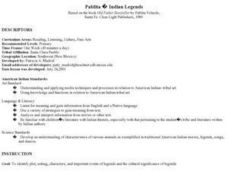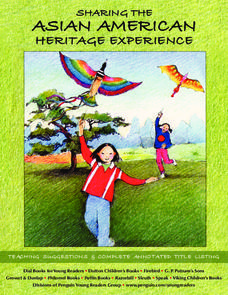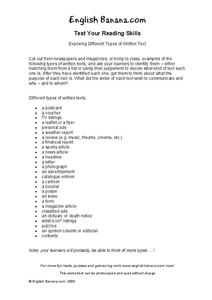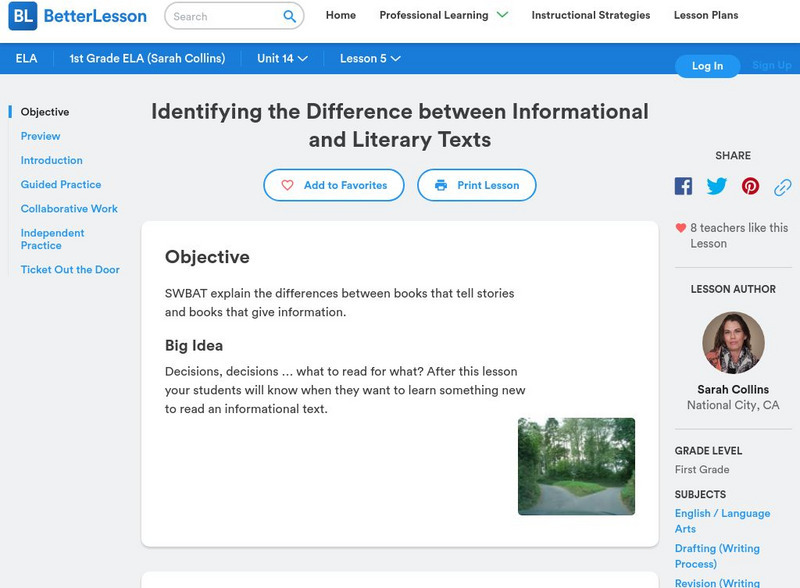Curated OER
Determining Author's Point of View: The Sneeches
Determine the author's point of view in a text. Young readers read Dr. Seuss' The Sneeches and identify the author's purpose in the story. They identify persuasive techniques in writing, asking and answering questions to better...
Curated OER
Pablita Indian Legends
Scholars are introduced to the characteristics of a legend. They read and discuss Old Father Story Teller by Pablita Velarde. Then, in groups, they write and illustrate a poem based on one of the legends from the book. This lesson plan...
Great Schools
Different Types of Writing
What type of writing is this? Learners read a brief introduction to various types of text: instructions, explanations, poems, folk tales, novels, informative, and arguments. The introduction doesn't explain these, so...
Great Schools
A Questionnaire: What Do You Like to Read?
What do your fifth graders know about types of fiction, nonfiction, and poetry? Find out as they fill out this questionnaire that requires them to list authors and texts that exemplify each genre. Not only will you be able to assess what...
Curated OER
Fiction and Nonfiction
Your emerging readers know not to judge a book by its cover, but they can categorize these titles into either fiction or nonfiction. There are four book covers pictured here, and scholars record the titles under the corresponding text...
Curated OER
Mixed Bags: Fiction and Nonfiction
The second in a series of three lessons from Scholastic comparing and contrasting fiction and nonfiction, this activity requires learners to read, write, and compare two books independently. After briefly reviewing the features of...
Curated OER
Find The Hidden Message: Media Literacy in Primary Grades
Learners practice listening to and reading various types of media and text. In groups, learners use video, newspapers, magazines, and more to compare and contrast different types of information. They identify the differences between fact...
Curated OER
Library Lesson Plan
Explain the differences between fiction and non-fiction and the characteristics of a biography. Learners analyze three pieces of literature on the same topic to determine which is fiction and which is non-fiction. In the end, relate the...
Curated OER
What is a Biography?
Investigate biographies with your class. Compare autobiographies and biographies of Martin Luther King, Jr. as an example. Learners explore the factual components that make up a biography and locate several biographies of notable...
Curated OER
An Introduction to Nonfiction
Examine the elements of nonfiction writings in this instructional activity. Learners list common features of nonfiction and compare nonfiction and fiction books on the same topic. Create a Venn diagram comparing and contrasting the two...
Curated OER
Asian America: Heritage Experience
Learners of all ages read and discuss books about Asian America. In this Asian-America lesson plan, different books for every age group are listed and various teaching strategies are suggested. Great tips cover virtually every grade level!
Curated OER
Exploring Different Types of Written Text
In this text analysis worksheet, students examine different types of texts and identify each one by matching them from a list. Students determine what each text communicates and for whom.
Better Lesson
Better Lesson: Identifying the Difference Between Informational and Literary Text
Students will learn the difference between books that tell stories and books that give information. Multiple videos of different level reading groups engaged in this lesson, along with a printable activity sheet are included.
E Reading Worksheets
E Reading Worksheets: Genre Worksheets
This learning module provides remediation with identifying genre of books and various texts. Practice with capitalizing nouns is provided with through worksheets, an online site, and a video tutorial. .
Texas Education Agency
Texas Gateway: Reading Like a Writer: Text Types
This site offers four downloadable videos: 1) Major text types commonly used across content areas; 2) Reading like a Writer, Charting 1; 3) Reading like a Writer, Charting 2; 4) Reading like a Writer, Charting 3. It also offers handouts.
















